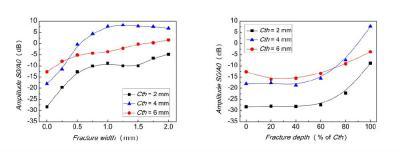A recent study illustrated that the mode conversion of the ultrasonic guided waves can quantitatively reflect the fracture degree of long cortical bone, which may provide new method for long bone fracture evaluation and healing monitoring.
This scientific paper (Quantitative evaluation of long bone fractures by ultrasonic guided waves) is published on SCIENCE CHINA Physica, Mechanica & Astronomica (in Chinese), 2014, 44(7). Professor TA De-an from school of information science and technology, Fudan university leads this study. The impacts of fracture width and depth on the amplitude of guided waves are quantitatively analyzed.
Bone fracture is a medical condition in which bone discontinuity is created by stresses higher than the bone can bear. Statistical studies show that 5-10% of the fractured patients are suffering the healing obstacles. Fracture healing is a proliferative process and full recovery can take 3-5 years. The diseases in the healing process are easily neglected, leading to severe bone loss and secondary damage, impacting the physical condition of the patients. Thus, early diagnosis of the healing obstacle is crucial to ensure the healing process. The accurate diagnosis and dynamic monitoring are fundamental for the prompt treatment.
With the advantages of quantitative ultrasound (QUS), such as low-expense, portability, and non-ionizing radiation, ultrasonic guided waves can also detect the geometry of long cortical bone, (e.g. thickness, profile and section) and measure the material parameters, (e.g. BMD, porosity and Young's modulus), which has attracted increasing attentions. However, due to the immature understanding to the ultrasound propagation in long cortical bones, ultrasonic guided waves method has not been widely applied to the clinical practice of the long bone fracture evaluation.

These images shows an (a) intact and (b) 1 mm width 100 percent depth fracture.
(Photo Credit: ©Science China Press)
Numerical simulations are carried out to analyze the guided waves propagation in the fractured long bone. The innovation of this study is the use of narrowband low-frequency ultrasound to avoid the multimode overlap. Only two fundamental guided modes, symmetric S0 and asymmetric A0, are excited, which simplifies the mode separation and quantitative determination. Fig. 1a and Fig. 1b depict the guided signals in the intact and fractured long bones, respectively. The impacts of fracture width and depth on the amplitudes of each guided modes are quantitatively discussed. It is demonstrated that the amplitude of the A0 mode is very sensitive to the width and depth variation. The ratio between the amplitudes of S0 and A0 is further proposed to evaluate the fracture degree (Fig. 2).
It indicates that the mode conversion of the ultrasonic guided waves can characterize the changes in the fracture depth and fracture width and provide quantitative parameters for fracture evaluation. The study may also be helpful to the ultrasound monitoring of long bone healing.

This graph charts the change in the ratio between the amplitudes of S0 and A0 as functions of (a) fracture width and (b) fracture depth.
(Photo Credit: ©Science China Press)
Source: Science China Press